The Ultimate Betta Guide
Everything You Need To Know To Keep Fish With Confidence

Learn In 3 Simple Steps

Step 1: Betta Crash Course
Every single detail you need to know to be a responsible fish owner.
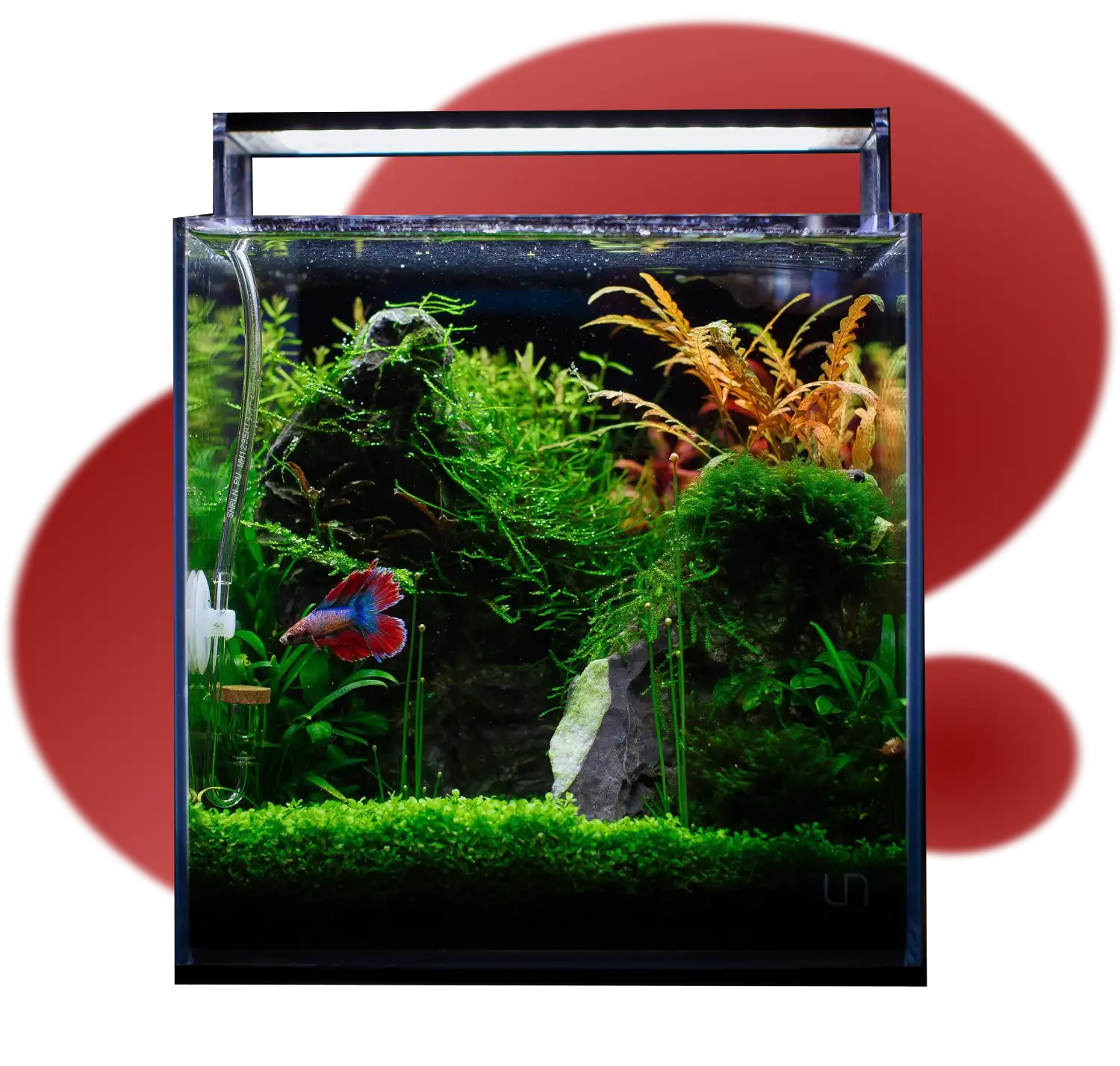
Step 2: Tank Zero to Hero
All The tools you absolutely need and none of the ones you don't.

Step 3: Easy Care Hacks
How to make care fun and easy so you can spend more time bonding with your betta.
You probably already know how awesome bettas are- not point repeating it.
But just like with anything in life, there’s a learning curve that comes with starting something new. Since you are caring for a living being, we have to be a little more attentive to details.
This is why this chapter will teach you:
- What are the daily and weekly tasks involved in caring for your betta.
- What are some of the cons to keeping a betta fish.
- How aquariums work- so you can be a more confident fishkeeper.
What's Required Of You
In A Nutshell
Feed: Twice A Day | 10 Minutes
Clean: Once A Week | 30 Minutes
Feed With Commercial Fish Food
Feed your betta twice a day with commercial fish food. For treats, use live food like brine shrimp.
Replace 25% Of The Water Weekly
Do a 25% water change about once a week. While changing, siphon the bottom of the tank and scrape algae if needed.
Your Myths About Bettas- Explained
Many people believe that bettas can live in small bowls or vases. In reality, bettas require a minimum of 2.5 gallons (preferably 5 gallons or more) to provide adequate space and maintain water quality.
While bettas are hardy, they need a well-filtered and heated aquarium to thrive. Stagnant water can lead to poor water quality and negatively impact the betta’s health.
Betta fish are tropical fish and require a stable temperature between 78-82°F (25-28°C). A heater is essential to maintain this temperature. Additionally, a filter helps to keep the water clean by removing debris and toxins.
Tap water often contains chlorine and chloramine, which can harm bettas. Using a water conditioner is essential to make tap water safe for bettas by neutralizing these harmful chemicals.
Some people may perceive bettas as disposable or short-lived pets. In reality, with proper care, bettas can live for several years, and their well-being should be taken seriously.
kind of commitment
Betta’s don’t require intensive, time-specific care. That means that you can care for them on your own schedule- and it only takes about 10 minutes a daily plus another 30 minutes a week.
What about vacations?
Bettas can survive up to 2 weeks without eating, assuming you’ve just changed the water before you left and have a filter runnig.
Moving a betta tank
Moving a betta is straightforward- unless you’re flying.
In general, moving any fish while flying is quite a nightmare.
Feeding Your Betta
In their natural habitat, betta fish mostly live off a diet of small insects, larvae, and zooplankton.
But at home, you’ll feed them tropical fish food. It comes in an array of different shapes and forms and satisfies all their dietary needs.
Another option you can go for is live food- like brine shrimp, daphnia or vinegar eels. As a beginner, you want most of your betta’s diet to be commercial food because live food:
- Requires preparation
- Is messier than commercial food
- Can expire and will require freezing or refrigeration.
Here are the 3 top options for food that beginners like:
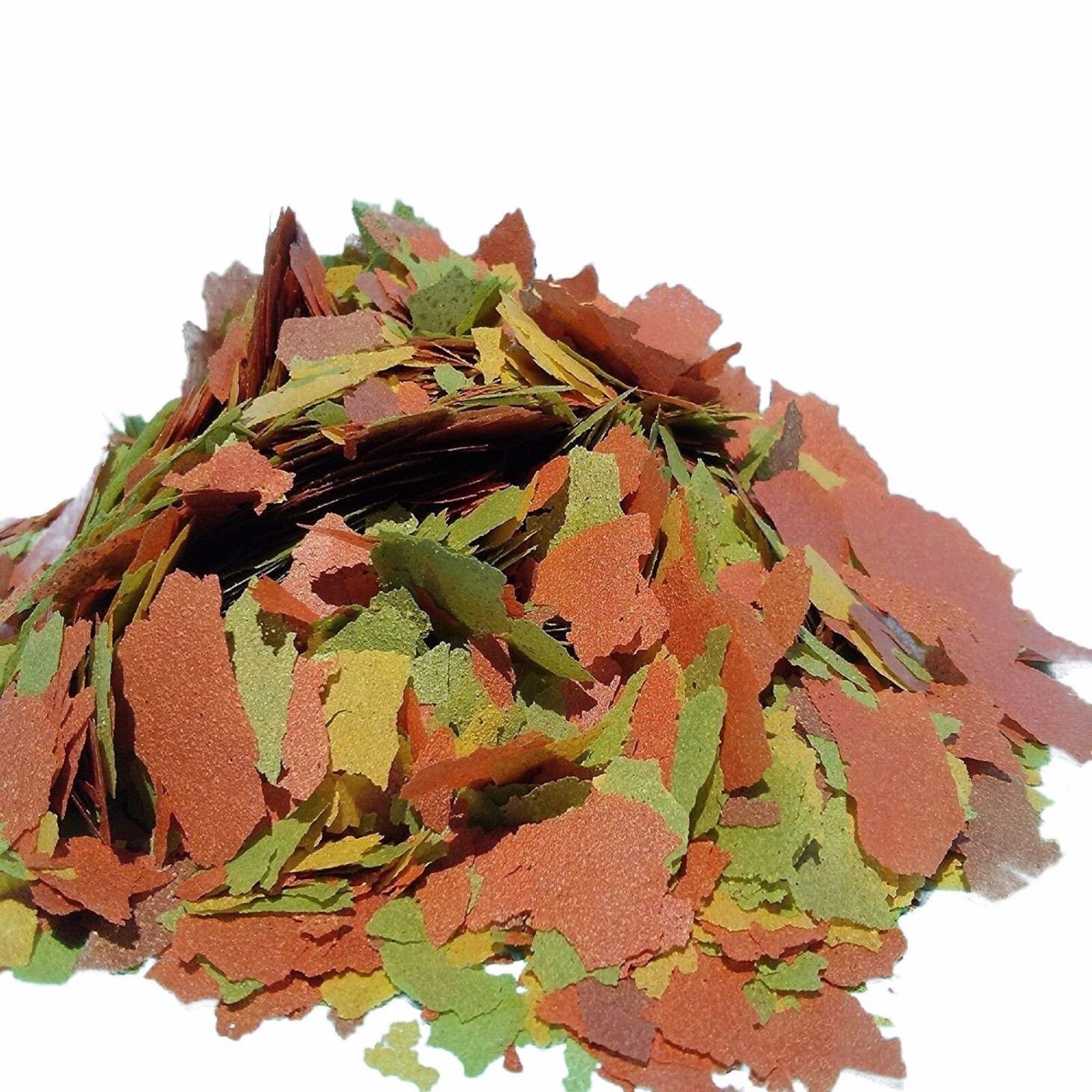
Fish Flakes
Fish flakes typically sink to the bottom of the tank and are a good option for those with tanks who have inhabitants on all levels (not you)
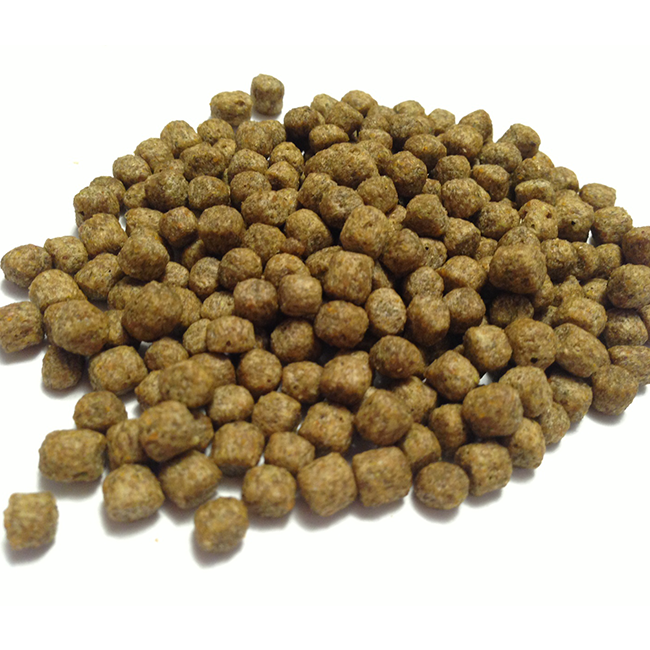
Fish Pallets
Pallets tend to suspend in the middle of the aquarium and are a fun and interactive way to feed your betta.
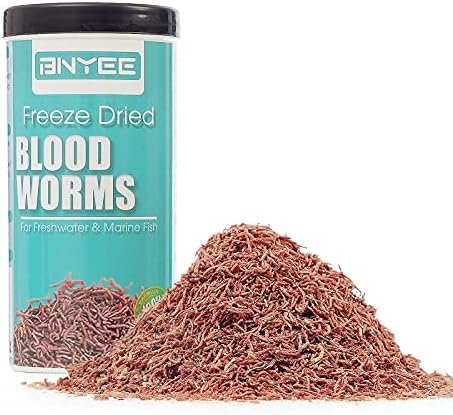
Blood Worms
Bloodworms are a great source of available protein and are a very popular food for bettas.
Treats
Treats are a fun part of the hobby and give you a better sense of bonding with your fish.
As we’ve mentioned before, live food will require preparation and special storage.

Brine Shrimp
Brine shrimp is the most popular guppy treat out there. You'll make a batch at a time and freeze leftovers in ice cube trays for later use. Compared to other live food options (like daphnia and vinegar eels) it produces the least amount of adverse smells.
Cleaning The Tank
Now that we’ve wrapped the food section, let’s jump to the second face of caring for your new fish- cleaning.
Changing the water
There are 2 ways to know a water change is in order:
- It’s been a week or so since the last one.
- You tested the water and the test indicated the parameters are out of the desired range.
Maintaining a fish tank is more about keeping the water parameters within range. That’s about 95% of it.
In the beginning, you’ll test the water more just to get the hang of it. Once you develop that “sense” you’ll be able to know when to test or change your water.
Here’s a snapshot of what the water change process looks like:
1. You’ll use a siphon to extract around 20-30 percent of the water (or a complete change if your setup is without a filter).
2. Prepare a separate container with fresh tap water, then add water conditioner to ensure its quality.
3. Add the newly conditioned water into the tank.
4. Get rid of the old tank water.
Siphoning the Substrate
All the siphon is an underwater vacuum cleaner.
While you are waiting for the water to drain, use your siphon and suck out leftover food and fish poop from the bottom of the tank.
Scrapping Algae
Algae scrapping will be the last part of your cleaning routine- and one you may not even have to do weekly.
Algae is more common and needs more attention in planted tanks. That doesn’t mean you’ll never get it- but you’ll have to manage it a lot less.

Algae in a fish tank

Cons Of Keeping Bettas
And How To Prevent Heartaches
Just like any animal, betta aren’t perfect.
Here are the top 3 negative aspects specific to bettas:
Solitary Nature
Male bettas, in particular, are known for their territorial and aggressive behavior. They may attack and injure other fish, especially other bettas. This aggression limits the choice of tankmates and often requires a betta to be kept alone. While female bettas can sometimes be kept in groups, they can also display aggression, and careful monitoring is necessary to prevent conflicts.
Specialized Tank Setup
Bettas have specific requirements for their tank setup. While guppies, for example, are adaptable to various conditions, bettas need a carefully crafted environment. They prefer warmer water, gentle filtration to avoid strong currents, and hiding spots. Creating an ideal betta habitat may involve additional equipment and considerations compared to more tolerant fish species.
Health Sensitivity
Bettas can be sensitive to changes in water quality. Even small fluctuations in temperature, ammonia, nitrite, or nitrate levels can stress or harm them. This sensitivity means that regular water testing and maintenance are crucial. Additionally, certain diseases, such as fin rot and ich, are relatively common in bettas. Being aware of their specific health needs and promptly addressing any issues is essential for their well-being.
Preventing Heartache
There are 2 very simple ways to give your betta the best life:
- Design the tank correctly with plenty of hiding spots, correct temp, mild currents and plenty of breathing surface area
- Test the water often and change it when parameters fall below desired levels.
Rest assured, we cover both of those topics in detail in the following chapters.

How Aquariums Work
So You Can Be A More Confident Fishkeeper
Fish Tank Glossary For Absolute Beginners
You might have heard some terms in the connection of a fish tank. Regardless of what you know or don’t know- this will teach you everything you need to know.
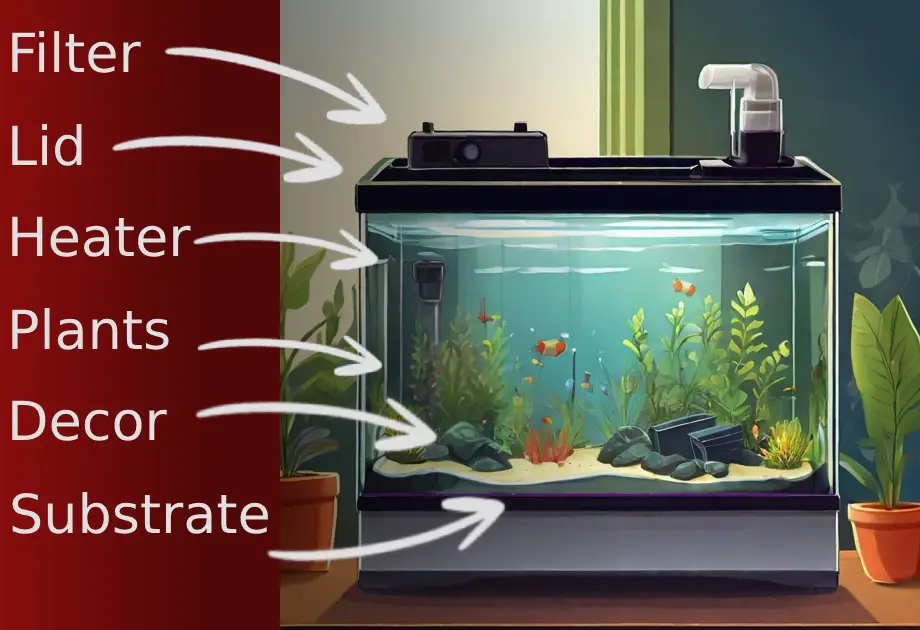
At this point you might begin the suspect that this list isn’t every possible aquarium related term. You are right- and it’s on purpose.
You are learning only what is relevant to you to keep a betta fish. There no point in explaining reverse osmosis water, for example, because you don’t need it (you’d need it if you had a saltwater tank, by the way)
Fish Tank Magic for Intermediates
For you to be a confident fishkeeper you’ll want to understand how your fish tank works, as this simple concept will help you troubleshoot issues and know what adjustments to make.
The foundation of your aquarium’s ecosystem is the nitrogen cycle. This natural process involves beneficial bacteria breaking down waste produced by fish poop and leftover food.
In nature, it happens naturally- mainly because beneficial bacteria are ample.
In your fish tank, it’s your filter that is responsible for introducing this bacteria.
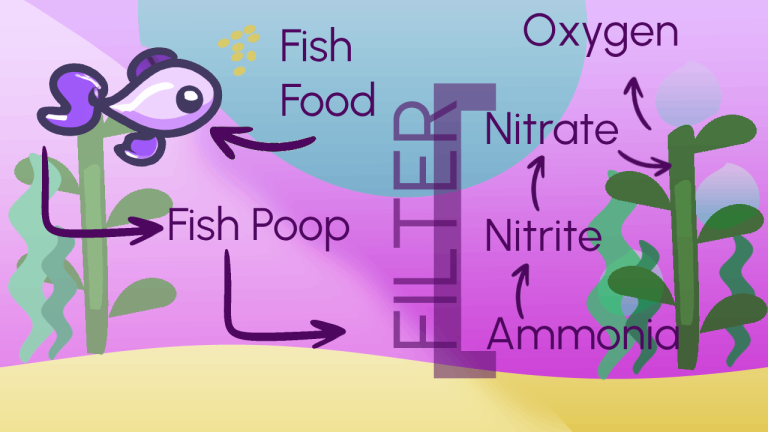
Since bettas can live in tanks as small as 5 gallons, some opt to go filterless. What it boils down to is filters allow you to go longer between water changes. If you are the type of person who may lazy out or just won’t have the time when a water change is needed- spend the extra 15 bucks and get a filter.
Recap
We’ve covered quite a few things here today, so let’s quickly recap:
Caring for a betta consists of 2 tasks: feeding and cleaning.
You’ll feed your betta twice a day, and clean its tank about once a week.
What turns your tank into a functioning ecosystem is your filter. You can go filterless- but you’ll have to change the water more frequently.
Fishkeeping is very similar to gardening. You’re main task is to keep the water within parameters.
Next we’ll talk about setting up your fish tank. We’ll cover all the equipment you need, how to size your tank and everything in between.
